Tree Agate, often referred to as Dendritic Agate, is a beautiful variety of Chalcedony that features unique, tree-like patterns formed by mineral inclusions, typically iron and manganese. Its earthy appearance and organic designs have made it a popular stone for centuries, appreciated not only for its aesthetic appeal but also for the various symbolic and purported healing properties attributed to it. While some claims around the stone’s abilities remain rooted in tradition and belief, its formation, composition, and physical characteristics can be understood scientifically.
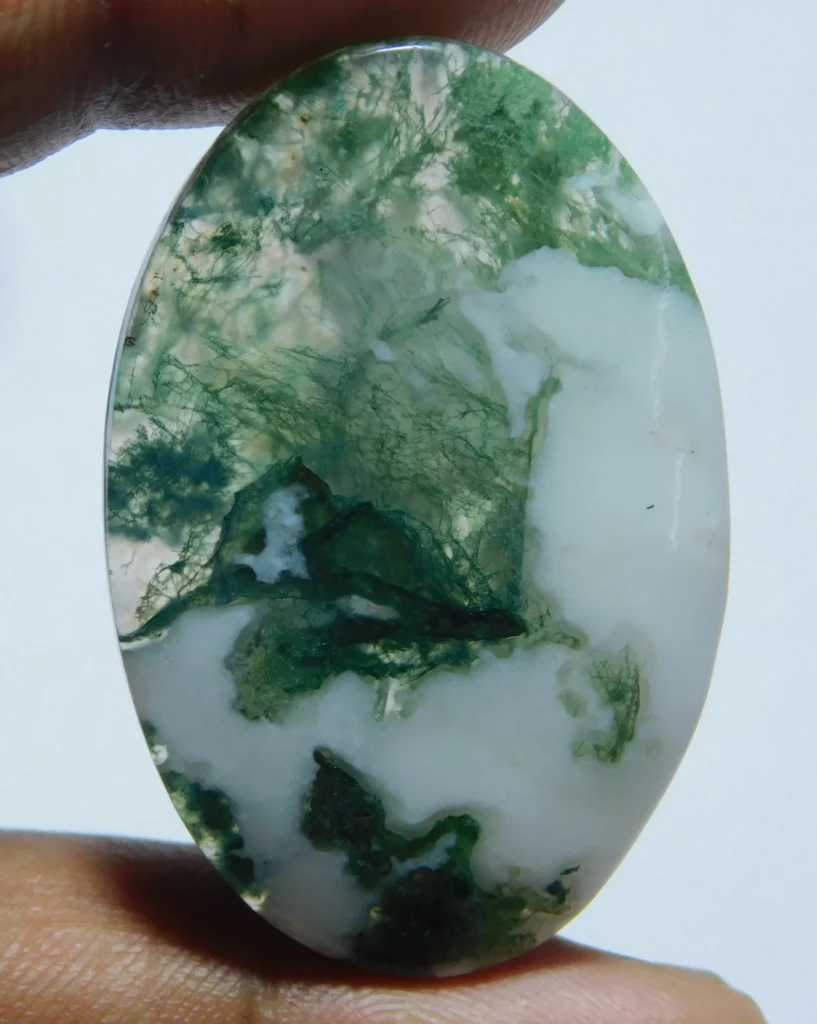
Scientific Formation and Composition
Tree Agate is part of the broader Agate family, which is itself a variety of Chalcedony, a microcrystalline form of Quartz (SiO₂). The dendritic inclusions seen in Tree Agate are formed when metallic oxides—such as iron or manganese—penetrate fissures in the stone over time. These minerals then crystallize in patterns that resemble branches or trees, giving the stone its distinctive appearance. Unlike most Agates, which are characterized by colorful banding, Tree Agate is primarily recognized for these dendritic inclusions rather than any specific color or transparency.
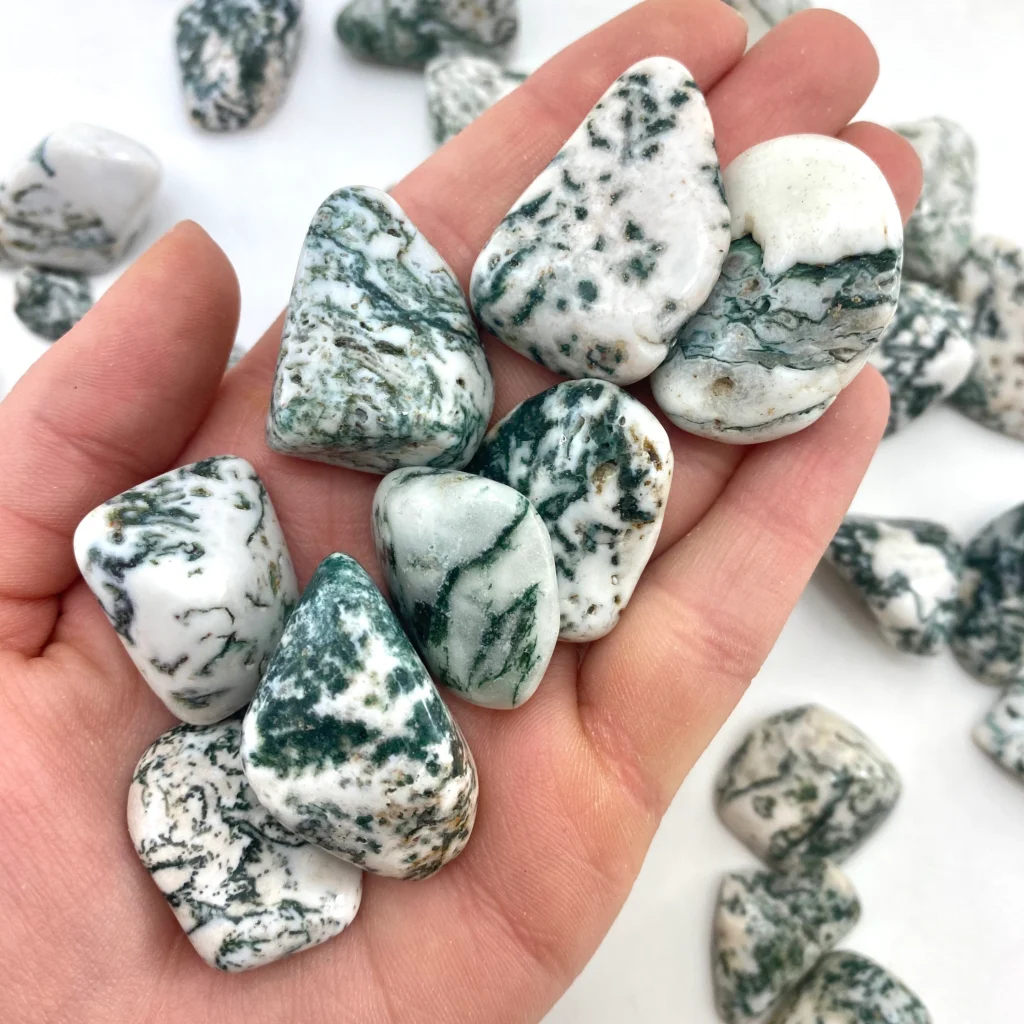
- Chemical Composition: SiO₂ (Silicon Dioxide) with iron and manganese oxides.
- Hardness: 6.5 to 7 on the Mohs scale, making it a durable stone suitable for various applications.
- Luster: Waxy to vitreous.
- Crystal System: Trigonal, part of the Quartz family.
Geological Origins
Tree Agate forms in regions rich in volcanic activity where silica-rich waters seep into rock cavities and slowly crystallize over time. The dendritic inclusions develop as mineral-laden solutions infiltrate cracks within the Chalcedony, and over time, these minerals settle into intricate, tree-like patterns. The process is natural, occurring over millions of years, with deposits of Tree Agate found in places like India, Brazil, and the United States.
Historical and Cultural Context
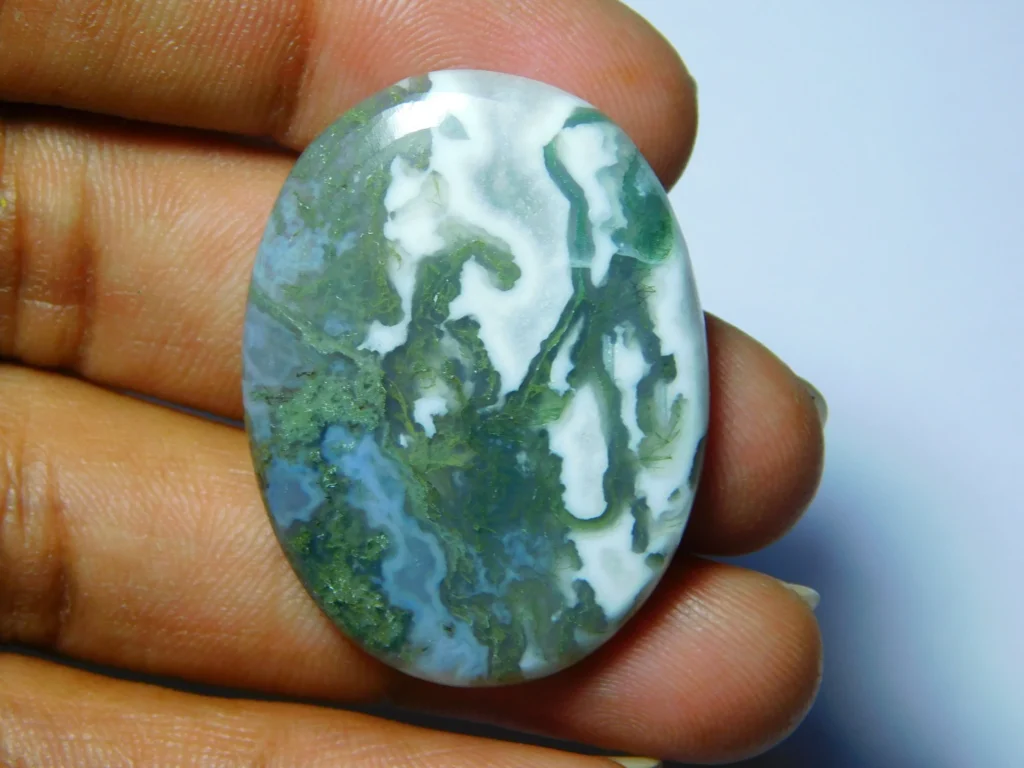
In various ancient cultures, Tree Agate was revered for its connection to nature and its symbolic association with growth, fertility, and protection. While these associations are more cultural than scientific, they provide insight into how Tree Agate has been valued over time.
- Ancient Civilizations: The Greeks and Romans used Tree Agate in jewelry and amulets, believing it fostered growth and health.
- Agricultural Symbolism: In agrarian societies, Tree Agate was often placed in fields to promote a bountiful harvest, symbolizing the interconnectedness of life and growth.
Tree Agate in Modern Uses
While Tree Agate is no longer widely used as a literal talisman in agriculture, it remains popular in contemporary jewelry, home decor, and holistic practices. Its unique appearance, durable structure, and connection to nature make it a sought-after stone for both aesthetic and symbolic purposes.
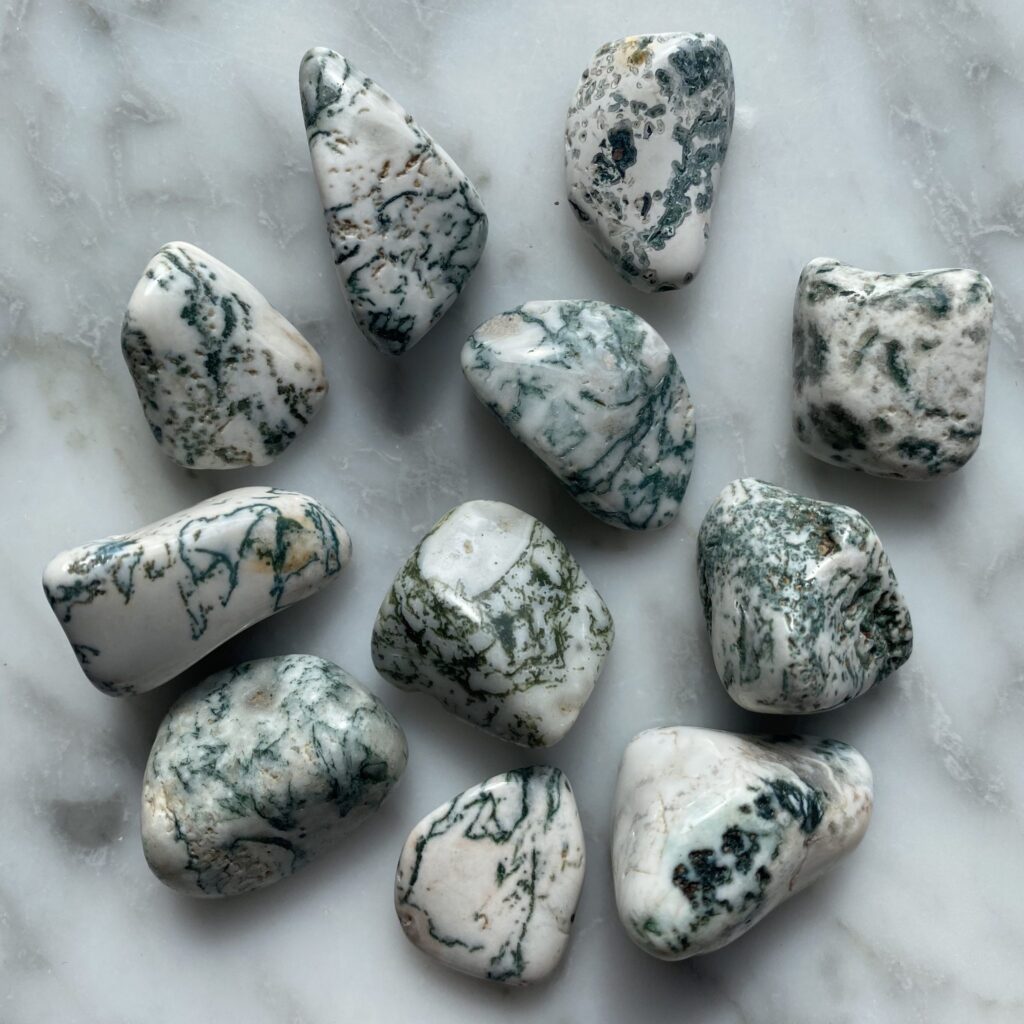
Scientific Exploration of Healing Properties
Though many of the healing properties attributed to Tree Agate are based on traditional beliefs and metaphysical practices, a scientific understanding of the stone’s impact is limited to indirect benefits rather than measurable physical effects. For example, holding or wearing Tree Agate may provide psychological benefits, largely due to placebo effects, self-suggestion, or meditative practices rather than any intrinsic healing ability of the stone itself.
Psychological and Emotional Benefits
Tree Agate, like many other stones, is often used in practices aimed at promoting calmness, emotional balance, and mindfulness. Though these effects are not scientifically proven to be directly caused by the stone itself, certain practices associated with using Tree Agate, such as meditation or mindfulness, can have measurable psychological benefits.
- Stress Reduction and Mindfulness: Studies have shown that mindfulness and meditation can reduce stress, lower blood pressure, and improve mental health. The tactile sensation of holding a smooth, calming object like Tree Agate during these practices can serve as a focal point, helping to ground the mind and body. This grounding effect could be attributed to the meditative process rather than the stone’s chemical properties.
- Placebo Effect: Many users of Tree Agate report feeling more grounded or at peace when holding or wearing the stone. The placebo effect, a well-documented phenomenon, occurs when a person’s belief in a treatment or object induces real psychological or physiological changes. In this case, belief in Tree Agate’s properties could trigger a calming effect.
No Direct Physiological Impact
There is no scientific evidence to suggest that Tree Agate, or any crystal, has direct physiological effects on the human body. While the metaphysical community often claims that Tree Agate can influence the immune system, promote fertility, or enhance physical strength, these claims are not supported by scientific research. Any perceived physical benefits are more likely to be indirect, stemming from reduced stress or increased mindfulness, both of which are known to contribute to overall health and well-being.
Tree Agate and Environmental Psychology
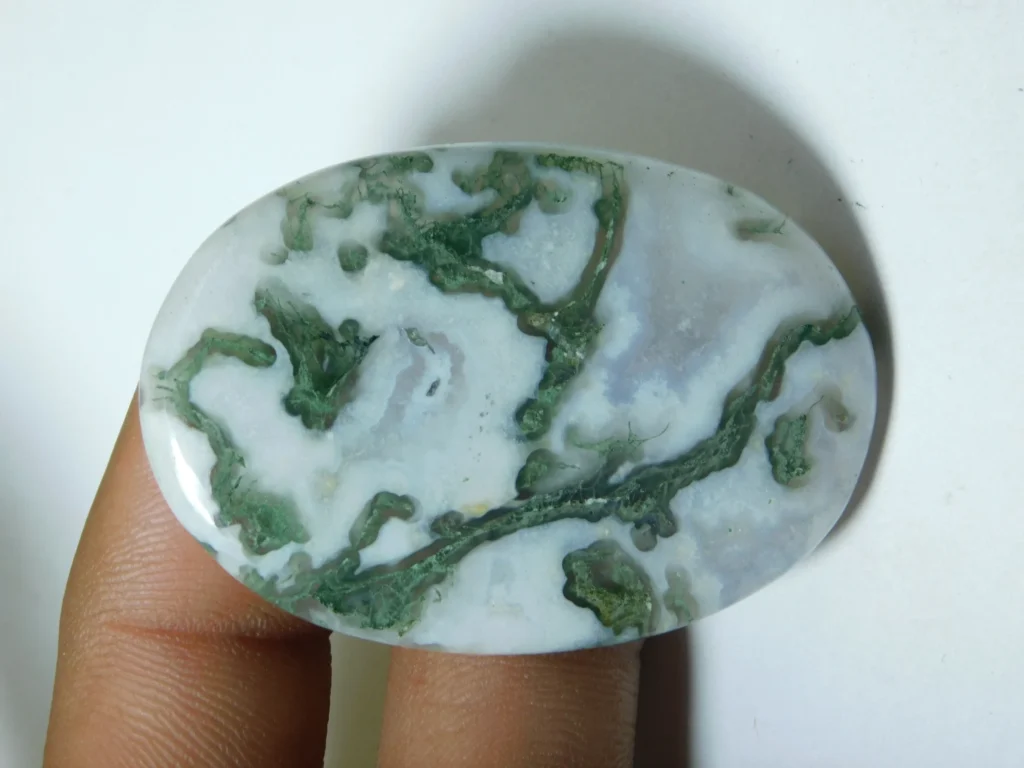
One of the reasons Tree Agate is appreciated, especially in the context of holistic living, is due to its connection to nature. Environmental psychology, a field that studies the relationship between humans and their surroundings, supports the idea that exposure to natural elements can positively affect mental health.
- Biophilia Hypothesis: Proposed by biologist E.O. Wilson, the biophilia hypothesis suggests that humans have an innate connection to nature. Objects that mimic natural forms, like Tree Agate with its dendritic patterns, could invoke feelings of calm and groundedness due to this subconscious connection to the natural world.
- Decorative Use for Well-being: Tree Agate is often used in home decor for its earthy aesthetic and its association with tranquility. Placing natural objects like stones or plants in one’s living environment has been shown to reduce stress, increase positive emotions, and improve cognitive function.
Ethnobotanical Perspective
The dendritic patterns of Tree Agate resemble trees, branches, or plant roots, which may be why many cultures historically associated the stone with growth and fertility. Although these associations are symbolic rather than scientific, they reflect an understanding of the interconnectedness of nature. Just as tree roots anchor a plant and support its growth, the stone is believed to provide grounding and stability to those who use it.
Physical Durability and Practical Uses
While Tree Agate’s metaphysical properties are based on belief systems, its physical properties make it a practical and durable stone for various uses:
- Jewelry: Tree Agate’s hardness (6.5-7 on the Mohs scale) makes it suitable for everyday wear in rings, necklaces, or bracelets. It is resistant to scratches and holds a polish well, making it a popular choice for jewelry designers.
- Home Decor: Polished slabs, tumbled stones, and decorative carvings of Tree Agate are often used in interior design. Its natural patterns evoke a sense of organic beauty, contributing to a calming and grounded atmosphere in living spaces.
Conclusion
Tree Agate, while steeped in ancient traditions and metaphysical practices, is primarily appreciated today for its natural beauty and calming presence. Scientifically, the stone is valued for its geological formation, durability, and unique dendritic patterns, which make it a versatile material in both jewelry and home decor.
While there is no scientific evidence to support direct healing effects from Tree Agate, it may still provide psychological benefits through mindfulness practices, environmental aesthetics, and the power of belief. Its association with nature aligns with broader scientific understandings of the benefits of natural elements on human well-being, making Tree Agate a meaningful stone in both symbolic and practical terms.




































